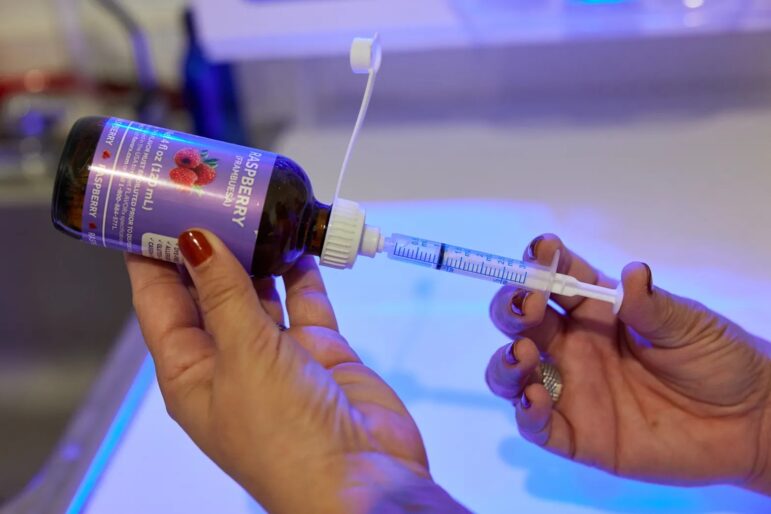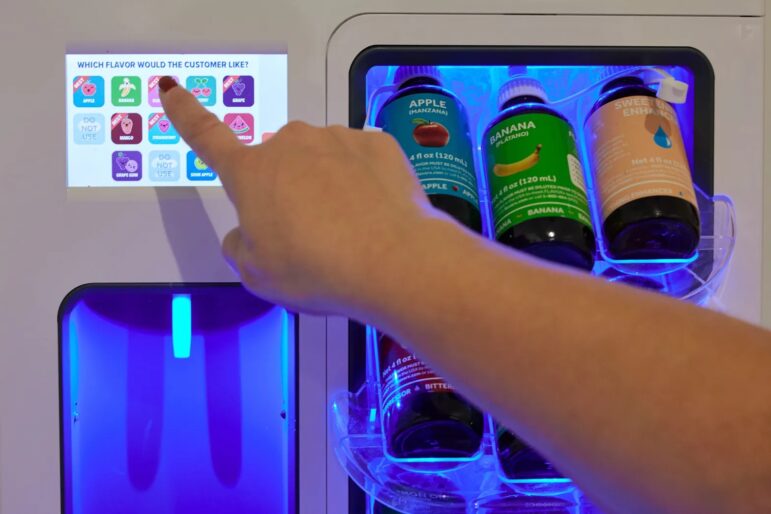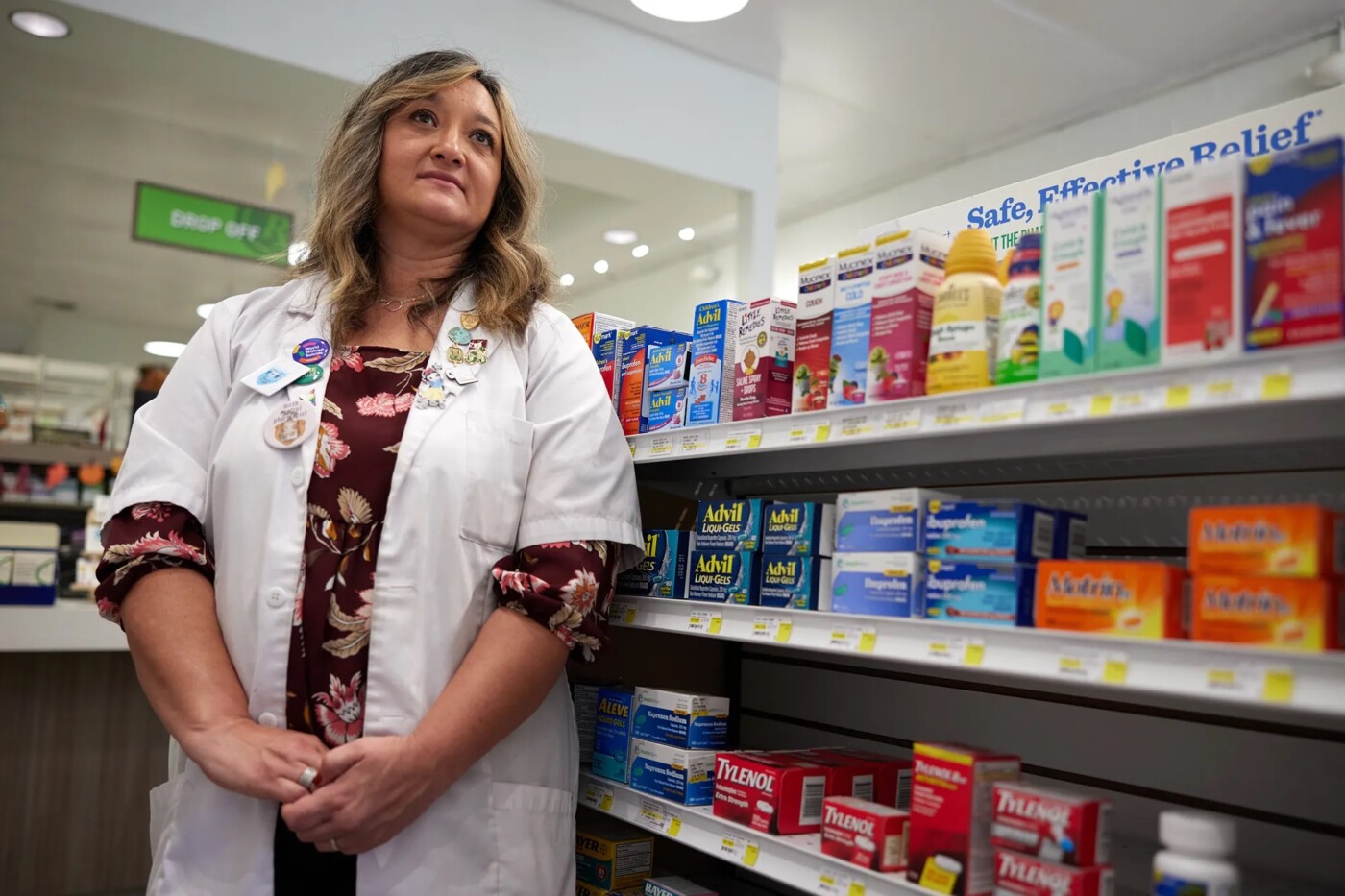More than 3,000 California pharmacies earlier this month ended a service they long provided to help the medicine go down, and it’s unclear when they’ll restore it.
The pharmacies suspended their practice of flavoring medication because they’re awaiting rules from a state regulator charged with applying federal guidance that characterized the service as drug compounding, meaning the mixing of prescription medication.
Medicines that are commonly flavored include flu syrups, like Tamiflu, and various antibiotic prescriptions, including amoxicillin and Augmentin. Parents are worried about the change, especially as respiratory diseases and infections become more prevalent during the winter.
Brenda Alvarez of Anaheim said her four kids don’t like taking unflavored medication. “It’s harder for them to get the medication, especially when they’re sick, because the taste is just really bad,” she said.
The suspension of flavoring services by pharmacies follows new guidance from the United States Pharmacopeia, a nonprofit agency that advises the federal government.
It’s a shift from California’s past policy. In 2010, the California Board of Pharmacy explicitly stated in their lawbook that drug compounding does not include “the addition of flavoring agent(s) to enhance palatability.”
California’s Board of Pharmacy now is preparing rules that will adopt the federal guidance. While these rules will not ban flavoring, they would require pharmacists to comply with more stringent regulations when providing the service.
Chad Baker, senior vice president of marketing at flavoring manufacturer FLAVORx, said it is easier for California pharmacies to drop service than deal with potential costs and citations from the state regulator.
“It has been particularly rough because California has had a language in place at the Board of Pharmacy for the past 14 years that said flavoring is not compounding. And so that was what a lot of pharmacies base their investments on and what they wanted to provide to customers,” he said.
Pharmacists are also worried about losing customers.
“When we talk about flavoring we’re really talking about products that are manufactured, have expiration dates, and are quality controlled from the manufacturer themselves,” said Sonya Frausto, pharmacist and owner of a Sacramento pharmacy. “We’re not making a new compound.”
Assemblymember Tina McKinnor, an Inglewood Democrat, introduced a bill this year that would have prevented the confusion by excluding flavoring from being considered drug compounding. The bill passed overwhelmingly in the Legislature, but Gov. Gavin Newsom vetoed it.
“While I appreciate the author’s intention to maintain the current availability of flavored medication, this bill would create standards for California that do not meet the United States Pharmacopeia-National Formulary’s guidelines regarding compounding that have been put in place to minimize patients’ risk of harm,” Newsom wrote in his veto message.

The veto surprised some of the lawmakers who backed the bill.
“Anybody that’s been a parent knows that medication is only good when consumed, and when you have a child that is resisting taking the medication, that’s a big problem,” said Assemblymember Tom Lackey, a Republican from Palmdale who was a co-author of one of the versions of the bill.
California is bound to the federal guidance because of a law Newsom signed in 2019 that requires the Board of Pharmacy to adopt regulations based on US Pharmacopeia standards.
US Pharmacopeia in late 2022 put forward an updated guidance on compounding that included stricter regulations, but was unclear on the issue of flavoring. Later, it released a supplement to the guidance saying that flavoring has been within the scope of drug compounding since 2004.
Pharmacists in April attended a Board of Pharmacy meeting where they urged regulators to exempt flavoring from the compounding rules. Board Vice President Maria Serpa told them “such action would run contrary to the board’s authority and would create conflict with federal law. California cannot adopt a lesser standard than those established” by US Pharmacopeia, according to meeting minutes.

Lobbyists representing pharmacies and flavoring manufacturers wrote several letters to the state board asking it to reconsider its position. “The board has treated medication flavoring as a pharmacy practice outside of the realm of compounding for decades,” they wrote in one letter.
But the board didn’t budge, and Newsom vetoed the bill that would have given the pharmacies more leeway.
Compliance, according to the US Pharmacopeia, would include stricter hygiene regulations as well as documentation of the compounding process. Some pharmacists are concerned the policies could drive up their costs.
According to a statement by the California Board of Pharmacy, “there are no provisions in pharmacy law that require a pharmacy to obtain a special or secondary license to compound nonsterile preparations,” which includes flavoring. “A pharmacy engaging in the practice of nonsterile compounding must comply with federal law, national standards and state law.”
Parents are worried that the lack of flavors will deter their children from taking their medicine.
“Special needs parents like myself really struggle with children wanting to take their medication,” said Alvarez, whose oldest son, 9, was diagnosed with autism and sensory processing disorder.
Frausto, the Sacramento pharmacist, also is a mother of two children. She said when medication is flavored, kids are more likely to take the full dose of the medication for the prescribed time.
“We want to make them feel comfortable,” she said. “Not doing flavoring sometimes can leave a lasting impression on the kids. They can say, ‘Oh I remember when I tasted that amoxicillin and it was disgusting,’ versus, ‘I remember taking that medication and it tasted like grape and I can continue to take the medication the next time I get prescribed the medication,’” she said.
Pharmacy chains including CVS and Rite Aid have stopped offering flavors in medications. Smaller pharmacies, like Frausto’s Ten Acres Pharmacy, an independent local pharmacy in Sacramento, are worried about the increased costs that could come with the federal guidance.
“I don’t have the capital to reinvest in new hoods or new types of ventilation systems based on what [the board’s] requirements are,” she said.
In California, the number of pharmacies that still offer flavoring fell to about 50, from more than 3,000 locations. This means families, especially those living in rural areas, could have to travel far to continue to get their kids’ medications flavored.
Alvarez said she would continue to give her children flavored medication, even if it means she has to drive a greater distance.
“It would be more of an inconvenience now,” she said. “But I think that would be the only way, just because I don’t see (my son) taking his medication otherwise.”
Supported by the California Health Care Foundation (CHCF), which works to ensure thatpeople have access to the care they need, when they need it, at a price they can afford. Visit www.chcf.org to learn more.
